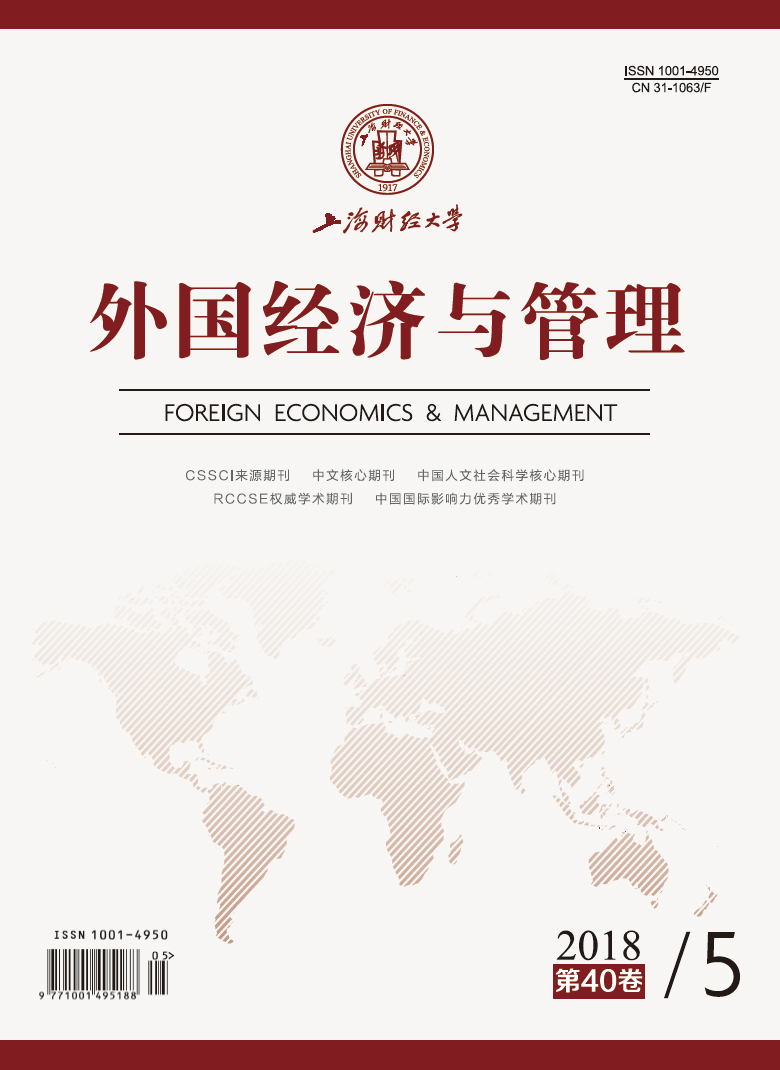敬畏感是个体面对现有认知模板无法解释的事物时所产生的多种情绪交错的复杂情绪。敬畏体验包含感知的宏大和顺化的需求,因其对个体认知模板的改变从而对个体的心理和行为产生巨大影响。敬畏感的复杂性,使得其研究起步晚、进展慢,在营销研究领域更显薄弱。本文从敬畏感的本质、心理学原型、引致因素、构成维度和影响效果等方面详细评述了敬畏感的复杂性。在此基础上,本文从应用研究的角度探讨了营销研究中消费者敬畏感的启动方法和测量方法,并提出敬畏感在消费行为领域值得深入研究的六大专题。
敬畏感的复杂性及其在消费行为领域的研究展望
摘要
参考文献
1 迟毓凯. 人格与情境启动对亲社会行为的影响[D]. 上海: 华东师范大学, 2005.
4 施奈德•K J著, 杨韶刚译, 唤醒敬畏[M]. 北京: 机械工业出版社, 2015.
7 韦伯著, 刘援, 王予文译. 宗教社会学[M]. 台北: 桂冠图书公司, 1997.
12 Andresen J J. Awe and the transforming of awarenesses[J]. Contemporary Psychoanalysis, 1999, 35(3): 507–521. DOI:10.1080/00107530.1999.10746397
13 Bechwati N N, Baalbaki I. The power of one in mindful consumer behavior[A]. Advances in consumer research volume 39[C]. Duluth, MN: Association for Consumer Research, 2011.
14 Bettman J R. An Information processing theory of consumer choice[M]. Reading, MA: Addison-Wesley Pub. Co., 1979.
15 Bonner E T, Friedman H L. A conceptual clarification of the experience of awe: An interpretative phenomenological analysis[J]. Humanistic Psychologist, 2011, 39(3): 222–235. DOI:10.1080/08873267.2011.593372
16 Buss D M. The evolution of desire: Strategies of human mating[M]. New York: Basic Books, 1994: 397–415.
17 Carstensen L L, Isaacowitz D M, Charles S T. Taking time seriously: A theory of socioemotional selectivity[J]. American Psychologist, 1999, 54(3): 165–181. DOI:10.1037/0003-066X.54.3.165
18 Clark C. Emotions and micropolitics in everyday life: Some patterns and paradoxes of " place”[A]. Kemper T D. Research agendas in the sociology of emotions[M]. Albany, NY: State University of New York Press, 1990: 305–333.
19 De Mooij M, Hofstede G. The Hofstede model: Applications to global branding and advertising strategy and research[J]. International Journal of Advertising, 2010, 29(1): 85–110. DOI:10.2501/S026504870920104X
20 Ekman P. An argument for basic emotions[J]. Cognition and Emotion, 1992, 6(3-4): 169–200. DOI:10.1080/02699939208411068
21 Griskevicius V, Shiota M N, Neufeld S L. Influence of different positive emotions on persuasion processing: A functional evolutionary approach[J]. Emotion, 2010, 10(2): 190–206. DOI:10.1037/a0018421
22 Haidt J. Elevation and the positive psychology of morality[A]. Keyes C L M, Haidt J. Flourishing: Positive psychology and the life well-lived[M]. Washington, DC, US: American Psychological Association, 2003: 275–289.
24 Joye Y, Dewitte S. Up speeds you down. Awe-evoking monumental buildings trigger behavioral and perceived freezing[J]. Journal of Environmental Psychology, 2016, 47: 112–125. DOI:10.1016/j.jenvp.2016.05.001
25 Kabat-Zinn J. Mindfulness-based interventions in context: Past, present, and future[J]. Clinical Psychology Science and Practice, 2003, 10(2): 144–156. DOI:10.1093/clipsy.bpg016
26 Kang C, Whittingham K. Mindfulness: A dialogue between Buddhism and clinical psychology[J]. Mindfulness, 2010, 1(3): 161–173. DOI:10.1007/s12671-010-0018-1
27 Keltner D, Haidt J. Social functions of emotions at four levels of analysis[J]. Cognition and Emotion, 1999, 13(5): 505–521. DOI:10.1080/026999399379168
28 Keltner D, Haidt J. Social functions of emotions[A]. Mayne T J, Bonanno G A. Emotions: Current issues and future directions[M]. New York: Guilford Press, 2001: 192–213.
29 Keltner D, Haidt J. Approaching awe, a moral, spiritual, and aesthetic emotion[J]. Cognition and Emotion, 2003, 17(2): 297–314. DOI:10.1080/02699930302297
30 Keltner D, Kring A M. Emotion, social function, and psychopathology[J]. Review of General Psychology, 1998, 2(3): 320–340. DOI:10.1037/1089-2680.2.3.320
31 Kinsella T. Sundering the spell of visibility[A]. Pollock G. And my heart wound space. Leeds: Wild Pansy Press, 2015: 275–90.
32 Lazarus R S. Emotion and adaptation[M]. New York: Oxford University Press, 1991.
33 Lopez S J. The encyclopedia of positive psychology[M]. Oxford, United Kingdom: Wiley-Blackwell. 2009: 86–93.
34 Mackie D M, Worth L T. Processing deficits and the mediation of positive affect in persuasion[J]. Journal of Personality and Social Psychology, 1989, 57(1): 27–40. DOI:10.1037/0022-3514.57.1.27
36 McDonald M G. The nature of epiphanic experience[J]. Journal of Humanistic Psychology, 2008, 48(1): 89–115. DOI:10.1177/0022167807311878
37 Mignault A, Chaudhuri A. The many faces of a neutral face: Head tilt and perception of dominance and emotion[J]. Journal of nonverbal behavior, 2003, 27(2): 111–132. DOI:10.1023/A:1023914509763
38 Nisbett R E, Peng K P, Choi I, et al. Culture and systems of thought: Holistic versus analytic cognition[J]. Psychological Review, 2001, 108(2): 291–310. DOI:10.1037/0033-295X.108.2.291
39 Orr D W. Love it or lose it: The coming biophilia revolution[A]. Kellert S T, Wilson E O. The biophilia hypothesis[M]. Washington: Island Press, 1993: 415–440.
40 Piaget J, Inhelder B. The psychology of the child[M]. New York: Basic Books, 1969.
41 Piff P K, Dietze P, Feinberg M, et al. Awe, the small self, and prosocial behavior[J]. Journal of Personality and Social Psychology, 2015, 108(6): 883–899. DOI:10.1037/pspi0000018
42 Pilgrim L, Norris J I, Hackathorn J. Music is awesome: Influences of emotion, personality, and preference on experienced awe[J]. Journal of Consumer Behaviour, 2017, 16(5): 442–451. DOI:10.1002/cb.v16.5
44 Rudd M, Vohs K D, Aaker J. Awe expands people’s perception of time, alters decision making, and enhances well-being[J]. Psychological Science, 2012, 23(10): 1130–1136. DOI:10.1177/0956797612438731
46 Schurtz D R, Blincoe S, Smith R H, et al. Exploring the social aspects of goose bumps and their role in awe and envy[J]. Motivation and Emotion, 2012, 36(2): 205–217. DOI:10.1007/s11031-011-9243-8
47 Shiota M N, Keltner D, Mossman A. The nature of awe: Elicitors, appraisals, and effects on self-concept[J]. Cognition and Emotion, 2007, 21(5): 944–963. DOI:10.1080/02699930600923668
48 Sujan M, Bettman J R. The effects of brand positioning strategies on consumers’ brand and category perceptions: Some insights from schema research[J]. Journal of Marketing Research, 1989, 26(4): 454–467. DOI:10.2307/3172765
49 Tian Y, Lu Dong. The experimental research on the influence of materialism and the emotion of awe on life satisfaction and products preference[J]. Open Journal of Social Sciences, 2015, 3(10): 138–145. DOI:10.4236/jss.2015.310020
50 Valdesolo P, Graham J. Awe, uncertainty, and agency detection[J]. Psychological Science, 2014, 25(1): 170–178. DOI:10.1177/0956797613501884
51 Van Cappellen P, Saroglou V. Awe activates religious and spiritual feelings and behavioral intentions[J]. Psychology of Religion and Spirituality, 2012, 4(3): 223–236. DOI:10.1037/a0025986
52 Vohs K D, Schmeichel B J. Self-regulation and extended now: Controlling the self alters the subjective experience of time[J]. Journal of Personality and Social Psychology, 2003, 85(2): 217–230. DOI:10.1037/0022-3514.85.2.217
53 Wilson E O. Biophilia: The human bond with other species[M]. Cambridge MA: Harvard University Press, 1984.
54 Zhou X Y. Inspiring awe in consumers: Relevance, triggers, and behavioral consequences[A]. The 2016 China marketing international conference[C]. Qingdao, China: China University of Petroleum, 2016.
引用本文
叶巍岭, 周欣悦, 黄蓉. 敬畏感的复杂性及其在消费行为领域的研究展望[J]. 外国经济与管理, 2018, 40(5): 69-83.
导出参考文献,格式为:
上一篇:营销中的“可爱感知”研究综述
下一篇:开源合作生产:研究述评与展望





 11116
11116  13242
13242

